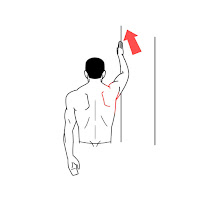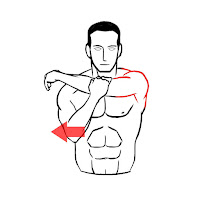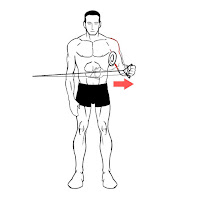Frozen shoulder is used to describe stiffness and pain in the shoulder joint. One of the common causes of frozen shoulder is immobility of the shoulder as a result of other injuries or illness when the connective tissue around the shoulder thickens and tightens around the shoulder joint.
Treatment of frozen shoulder typically involves physical therapy exercises. Steroid injections and arthroscopic surgery is occasionally required to treat the frozen shoulder.
The Harvard Medical School and University of Washington Orthopaedics and Sports Medicine have recommended home exercises for the stiff and frozen shoulder. We’ve added their exercises into a Home Exercise Program (HEP) using the PT-Helper CONNECT platform and presented on the PT-Helper mobile app. These sample exercises can be quickly downloaded into the PT-Helper mobile app using
HEP code: 3AED5619
You can also find these exercises in the Shoulder category in the PT-Helper mobile app to add to your Favorites which allows you to customize each exercise’s repetitions, sets, and hold time.
Reminder: Please consult your physician or physical therapist before engaging in any physical activity and stop if you experience pain or discomfort.
The recommended exercises include:
Passive Range of Motion Flexion – Sit alongside a table with your forearm resting on a smooth surface. Use a pillow case or towel under your arm to make sliding easier. Your thumb should be pointing up. Lean your body forward by bowing at the waist to slide your arm passively until you feel a comfortable stretch. Hold. Slowly sit back up dragging your arm along the table to starting position.
Towel Stretch for Internal Rotation v2 – Place a towel over your unaffected shoulder. Hold the front end of a towel with your un-involved hand in front of your chest. Reach behind your back with your involved arm and grasp the other end of the towel with your thumb up. Pull the towel forward and down with your un-involved arm pulling your other arm further up behind your back causing a stretch in your shoulder. Hold and return the towel to its starting position. Repeat.
Active Assisted Supine Flexion – While lying down on your back, grasp your hand or forearm with your opposite hand. Raise arms up and overhead as far as comfortable to feel a stretch in the affected shoulder. Hold, then return to starting position.
Wand External/Internal Rotation – While lying on your back, hold a wand with your involved side palm up and un-involved side palm down, elbows bent. Using your un-involved hand, move the wand away from your body while keeping your elbow of your involved side at your side until you feel s stretch. Hold then pull the staff back across your body with your un-involved hand. Hold then repeat.
ROM Pendulum (Circular – Clockwise) – Let arm move in a clockwise circle by rocking your upper body in a circular pattern.
Wall Climbs Abduction – Place your involved arm straight out against a wall at your side. Slowly walk up the wall with your fingers as high as you can until you feel a stretch. Your arm should be slightly in front of you (about a 30 degree angle). Try to keep your elbow straight and shoulder depressed. Step in towards the wall as needed. Hold at the top. Slowly walk fingers back down the wall and lower arm to the side.
Posterior Capsule Stretch – Cross one arm over your body and grasp at elbow with opposite arm. Gently pull hand towards opposite shoulder. Hold, then gently release. Your therapist may advise you to perform laying on your side, or leaning against a wall. Do not perform this exercise if you feel a sharp pinch in the front of your shoulder. Stretch should be felt in the back of your shoulder.
External Rotation 30 degrees – Attach exercise band to stationary point at waist height. Place towel roll under armpit. Hold the exercise bands with forearm across your body, thumb up, elbow bent at 90 degrees. Smoothly rotate your forearm outward across your body. Pause, then return your arm to the starting position.
Internal Rotation 30 degrees – Attach exercise band to stationary point at waist height. Place towel roll under armpit. Hold the exercise bands with forearm out perpendicular to your body, thumb up, elbow bent at 90 degrees. Smoothly rotate your forearm in across your body. Pause, then return your arm to the starting position.
Reminder: Please consult your physician before engaging in any physical activity and stop if you experience pain or discomfort.
Start your Free 30-day Trial of the PT-Helper CONNECT tool for physical therapists and other therapy providers, so you too may create and prescribe Home Exercise Programs like the one shown above.











